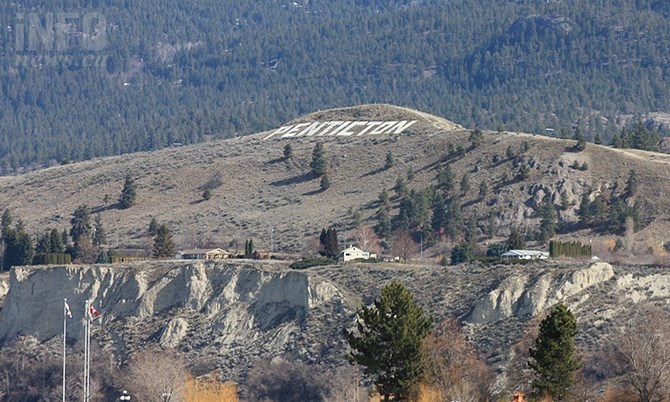
Munson Mountain
(STEVE ARSTAD / iNFOnews.ca)
December 25, 2022 - 6:00 AM
It’s easy to believe that plenty of prominent rock formations in the Okanagan were once volcanoes. What is curiouser is the fact they travelled as much as 100 kilometres to get here.
“The volcanoes actually developed and were active far to the east of their present positions,” Dr. Ryan Ransom of Okanagan College’s Physics and Astronomy department in Penticton, wrote in the publication Okanagan Landscapes.
“As the Okanagan Batholith and Okanagan Metamorphic Complex rose from deep within the earth, creating the Okanagan Fault, the pre-existing volcanic features slid westward. Hence, the roots of Munson Mountain are likely 80 to 100 kilometres to the east of the present position of the mountain.”
Ransom was writing specifically about Munson Mountain in Penticton but noted Giant’s Head in Summerland, Mt. Boucherie in West Kelowna and Knox Mountain in Kelowna are of the same nature.
Others point to Kelowna’s Dilworth and Black mountains and Spion Kop in Lake Country as other examples of local volcanoes.
“When walking along the shore of Okanagan Lake below Munson Mountain there are outcrops of granitic rock (not volcanic) that indicate that Munson Mountain is stranded above dissimilar rock and has been moved to the west,” Ransom wrote.
There is corroborating evidence given by Okanagan College’s Chani Welch and Todd Redding in a Laboratory Manual for Introduction to Physical Geography that includes a transcript of a tour they gave students of Munson Mountain.
They explain that B.C. was created during the Jurassic period, from 180 to 60 million years ago. At the start of that time the North American “craton” was moving west and ran up against volcanic islands that were being pushed by plate tectonics to the east.
READ MORE: Volcanoes erupted across the Okanagan Valley 40 million years ago
“When these two masses crashed into each other, material that had been on the seafloor off the coast of the craton was pushed up to form the Rocky Mountains,” the transcript says. “When those forces relaxed, valleys, including the Okanagan, were formed.”
During the Eocene period, from 55 to 34 million years ago, the land, instead of being compressed, relaxed and volcanic activity was frequent.
“It was during the Oligocene, 36 to 24 million years ago, that the Okanagan fault finally pulled apart to create the Okanagan Valley,” they said.
There was uplift to the east, creating the Monashee Mountains while the volcanoes “slid off to the west.”
“Munson Mountain doesn’t look much like a volcano anymore,” Ransom wrote. “This is due to the erosive power of rain, wind and glaciers. Multiple glaciations have worn away most of the mountain over the past few million years.”
To contact a reporter for this story, email Rob Munro or call 250-808-0143 or email the editor. You can also submit photos, videos or news tips to the newsroom and be entered to win a monthly prize draw.
We welcome your comments and opinions on our stories but play nice. We won't censor or delete comments unless they contain off-topic statements or links, unnecessary vulgarity, false facts, spam or obviously fake profiles. If you have any concerns about what you see in comments, email the editor in the link above.
News from © iNFOnews, 2022